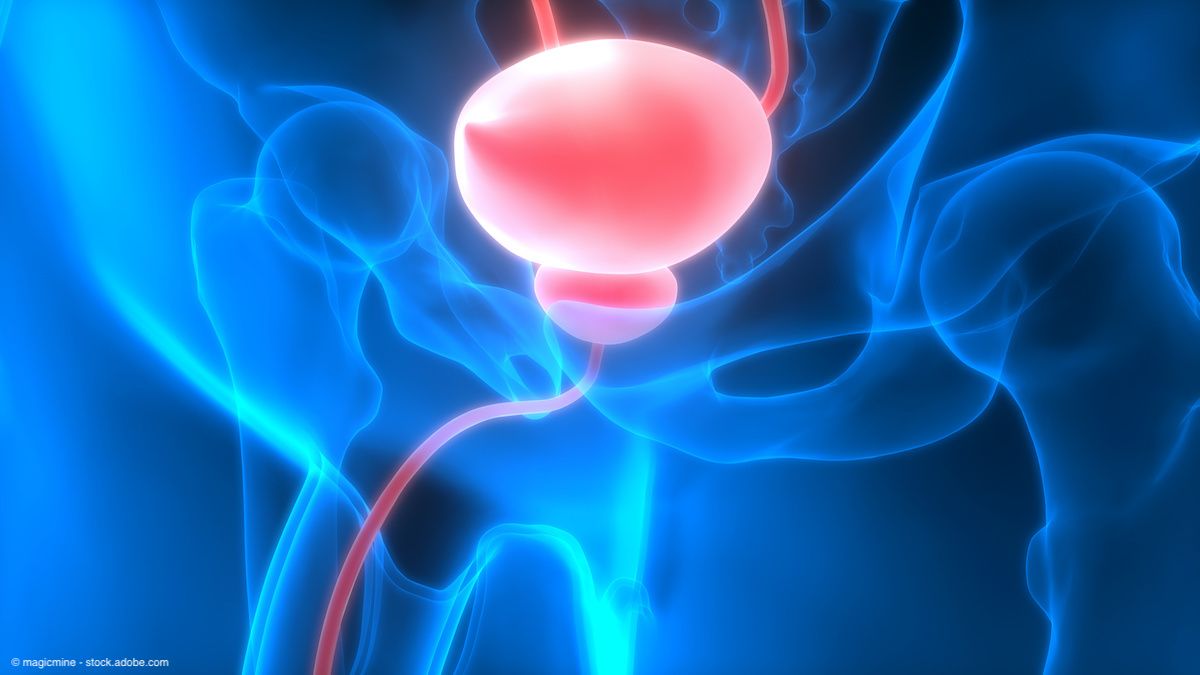Article
Potential biomarkers identified for OS with enfortumab vedotin in urothelial carcinoma
Author(s):
The investigators assessed data from the UNITE study, a retrospective study of patients treated with enfortumab vedotin and other agents.
An analysis shared at the 2023 ASCO Annual Meeting identified potential biomarkers associated with overall survival (OS) outcomes in patients with advanced urothelial carcinoma being treated with enfortumab vedotin (Padcev).1
Among all of the molecular biomarkers, multivariate analyses revealed 4 biomarkers predictive of outcomes with enfortumab vedotin in this patient population.

The study investigators assessed data from the UNITE study, a retrospective study of patients treated with enfortumab vedotin and other agents. For their analysis, the researchers included 303 patients from UNITE who had advanced urothelial carcinoma, received enfortumab vedotin outside of clinical trials, and had available next-generation sequencing (NGS) data.
Using univariate and multivariate analyses (MVA), the researchers assessed molecular markers, including somatic alterations detected in at least 5% of patients (TERTp, TP53, ARID1A, CDKN2A, CDKN2B,FGFR3, ERBB2, CCND1, KDM6A, MTAP, PIK3CA, RB1, TSC1, MDM2, MLL2, CDKN1A, FGF4, and FGF3); DNA damage response mutations (BRCA1, BRCA2, ATM, BARD1, CDK12, CHEK2, PALB2, PPP2R2A, and RAD51B); PD-L1 expression; and tumor mutational burden (TMB).
Observed response rate (ORR) was evaluated using logistic regression models. Kaplan Meier method and cox proportional hazard modeling was used to evaluate progression-free survival (PFS) and overall survival (OS).
Across all 303 patients, the ORR was 53%. The median PFS was 6.0 months and the median OS was 13.1 months.
Among all of the molecular biomarkers, MVA revealed 4 biomarkers predictive of outcomes with enfortumab vedotin in this patient population. Specifically, ERBB2 (HR,0.50; 95% CI, 0.3-0.9; P = .03), KDM6A (HR, 0.57; 95% CI, 0.3-1.0; P = .04), high PD-L1 expression (HR, 1.66; 95% CI, 1.0-2.7; P = .04), and low TMB (HR, 1.92; 95% CI, 1.1-3.3; P = .02) were all independently associated with longer OS outcomes.
Patient Characteristics
In the study population of 303 patients, the median patient age was 70 years (range, 35-93), 72% of patients were male, and 28% of patients were female. Regarding race, 87% were White, 5% were African American, 5% were Asian, 2% were “other,” and 1% were “unknown.” Sixty-four percent of patients had pure histology, 34% had variant (any component), and 2% had unknown. The primary tumor location was the bladder (68%), upper tract (28%), urethra (2%), or unknown (2%). Over three-fourths (77%) of patients had an ECOG performance status (PS) of 0 or 1, 19% of patients had an ECOG PS of ≥2, and 4% had an unknown ECOG PS.
Additional baseline characteristics showed that 78% of patients had visceral metastases, 30% had liver metastases, and 36% had bone metastases. All patients had NGS across a variety of assays including Foundation Medicine (36%), Tempus (16%), Oncomine (10%), UCSF500 (8%), Guardant 360 (5%), and other (25%). About two-thirds (67%) of patients had received 2 or more prior lines of therapy in the metastatic setting.
PD-L1 expression status was known for just under half (48%) of patients, with 66 patients categorized as PD-L1 negative (combined positive score [CPS] <10) and 80 patients categorized as PD-L1 positive (CPS ≥10). Tumor mutational burden was high (≥10 mutations/Mb) for 58 patients, low (<10 mutations/Mb) for 149 patients, and unknown for 96 patients.
Next Steps
Regarding the next steps, the investigators wrote in their research poster, “The underlying mechanisms of these findings merit translational study. These results require external validation but may help inform potential therapy sequencing in patients with advanced urothelial carcinoma.”
Reference
1. Jindal T, Zhang L, Jiang C, et al. Independent biomarkers predictive of outcomes with enfortumab vedotin (EV) in patients (pts) with advanced urothelial carcinoma (aUC): Analysis of the UNITE study. J Clin Oncol 41, 2023 (suppl 16; abstr 4573). doi: 10.1200/JCO.2023.41.16_suppl.4573

















